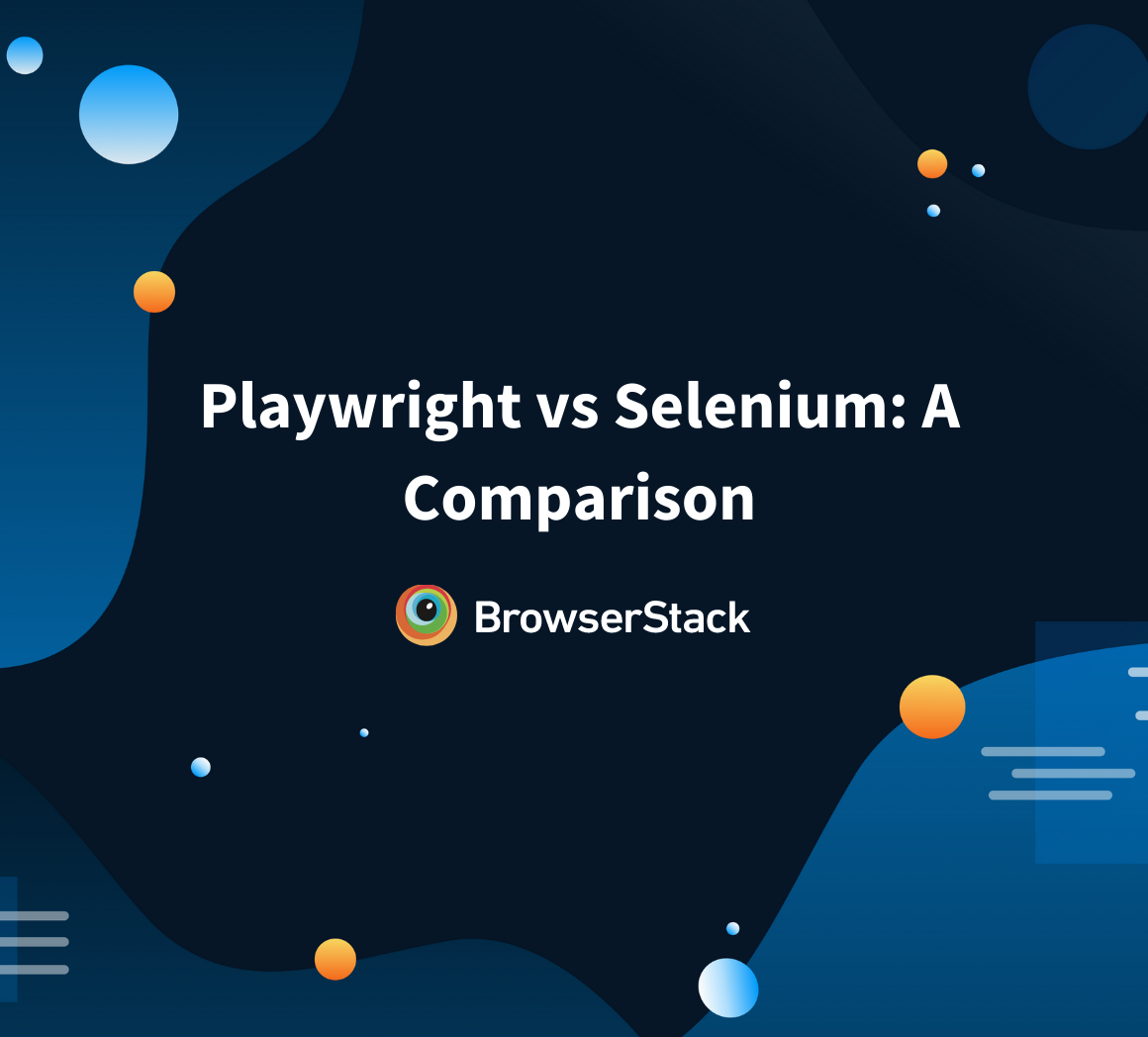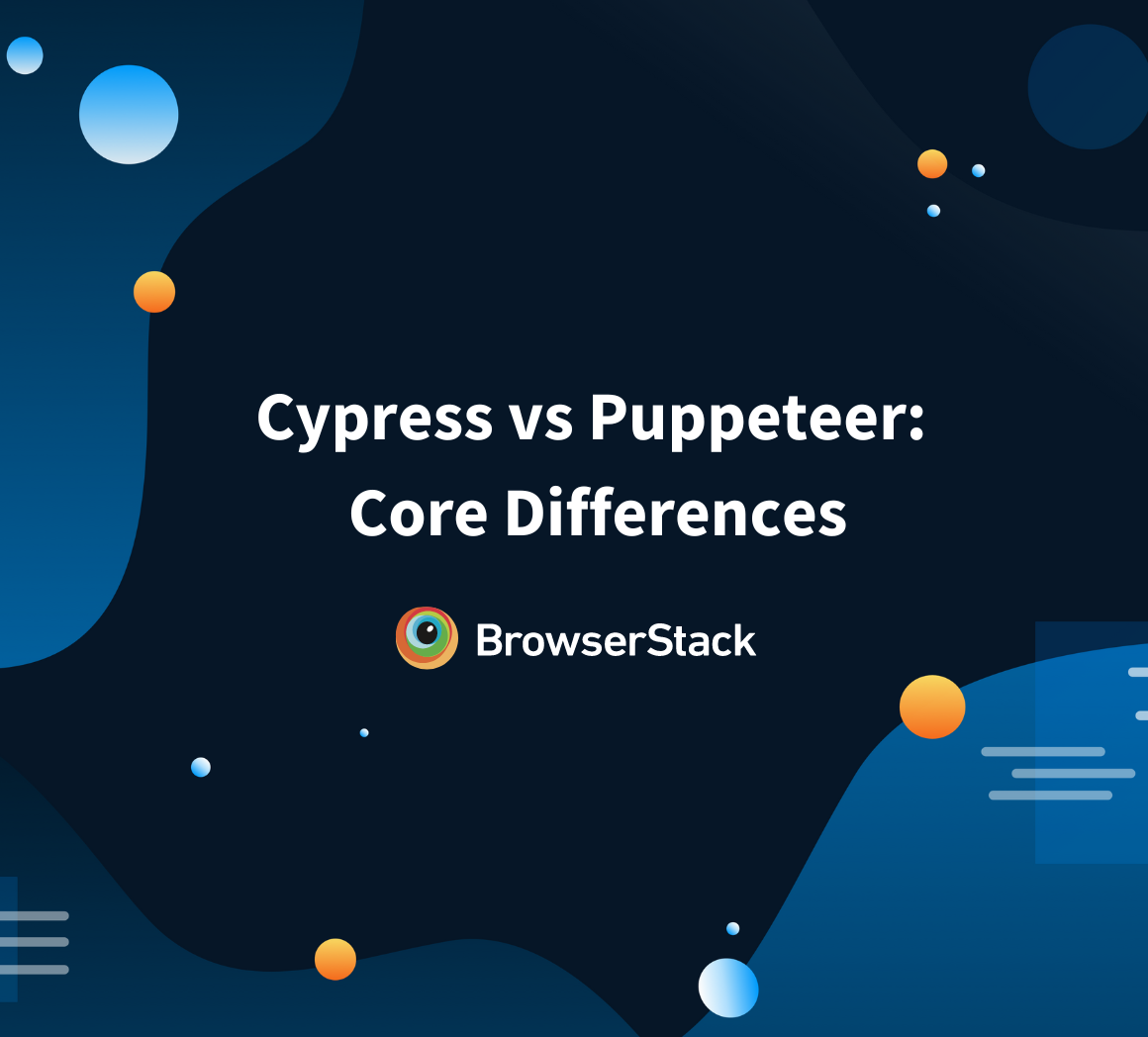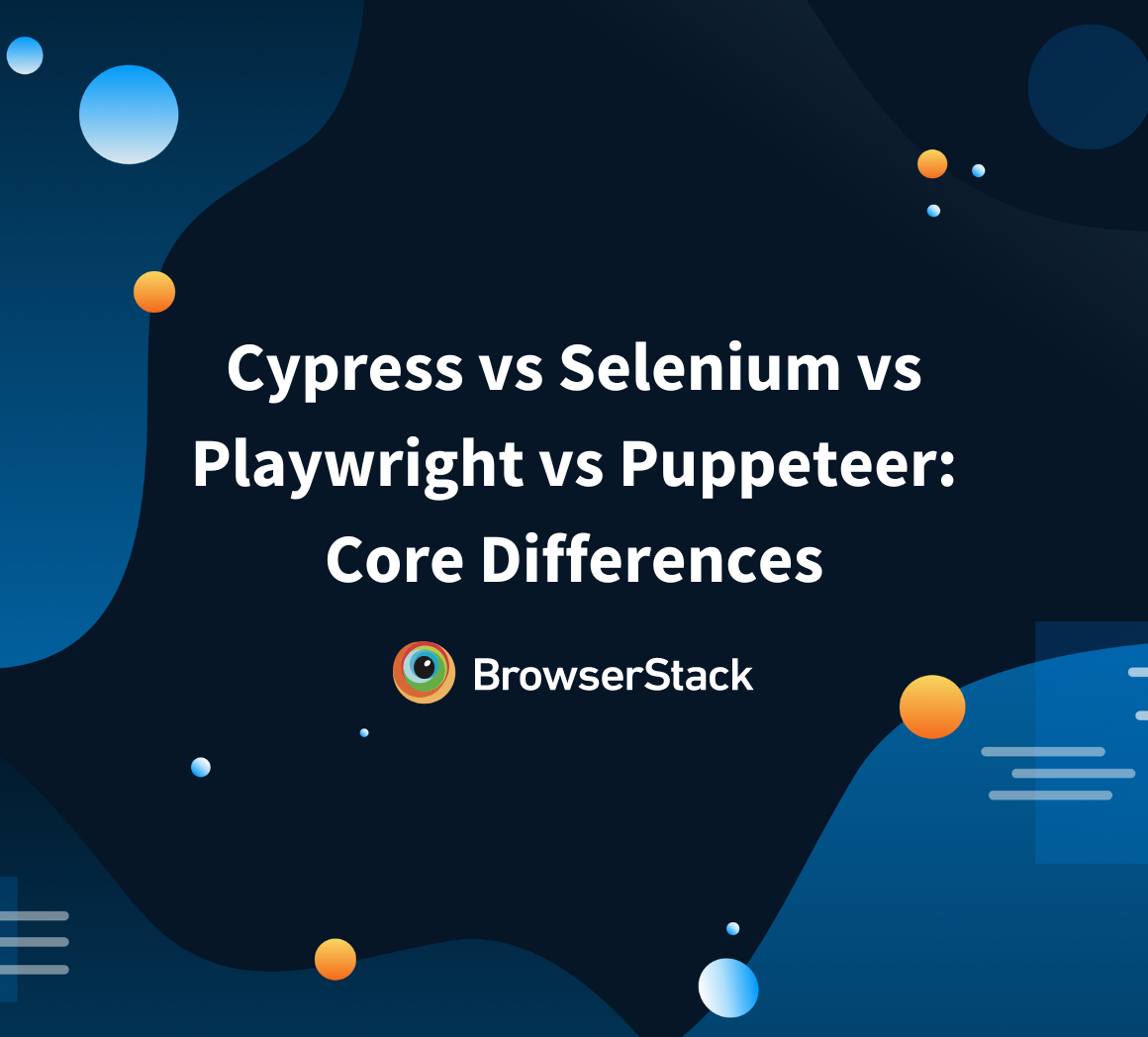Cypress vs Selenium: Key Differences
By Gurudatt S A, Community Contributor - May 13, 2024
Test Automation is pivotal for the software development process to deliver excellence in a shorter release cycle. Hence, choosing the right Test Automation framework like Selenium or Cypress becomes critical for the process. Selenium vs Cypress helps you identify when to use which Automation framework to meet all the testing requirements.
Let’s begin with the most fundamental question.
What is Cypress?
Cypress is an advanced front-end testing tool built for the modern web. It is specifically designed to handle the needs of both developers and QA engineers looking to automate testing for anything that runs in a browser.
Its unique architecture allows tests to run directly inside the browser, which enables more consistent results and faster execution compared to other testing frameworks that operate through a remote control.
Using Cypress, QAs or developers can create:
Following the agile methodology, front-end developers have started creating their own test cases. JavaScript is a widely used language among front-end developers. The fact that Cypress is purely based on JavaScript indicates how this tool is designed to meet the needs of front-end developers in particular. Naturally, one needs to be proficient in JavaScript before getting started with Cypress testing.
The architectural improvements in Cypress empower testers with the ability to perform Test-Driven Development (TDD) with complete end to end testing. Cypress is developed with the intent to make development and testing a parallel process.
Note: Cypress scripts cannot be executed outside the browser like in Selenium. All Cypress test scripts are executed within the browser. For example, to click on a specific button, Cypress doesn’t send the command to the browser using a specific driver. Instead, it uses the DOM events to send the click command to the button. This results in a much faster execution of test results.
Advantages of Cypress
- Direct Access: Unlike many other testing tools that use Selenium or similar APIs, Cypress operates directly within the browser environment. This setup allows Cypress to work on the same run-loop as the application being tested, providing native access to every DOM element, making the tests more reliable and quicker to execute.
- Real-Time Reloads: Cypress offers a feature where it automatically reloads whenever you make changes to your tests. You can see test results instantly as you adjust your code.
- Automatic Waiting: Cypress automatically waits for commands and assertions before moving on. There’s no need to define explicit waits or sleeps in your tests. For example, if you’re asserting that an element should be visible, Cypress will wait until this element is found in the DOM.
- Debugging: With Cypress, you can easily pause your tests and diagnose problems directly from the browser, using familiar dev tools. Error messages and stack traces are designed to be human-friendly. This feature significantly simplifies debugging.
- Network Traffic Control: Cypress allows you to stub and control any network requests from your tests, enabling you to test edge cases without requiring your backend to be part of the test.
- Screenshots and Videos: For continuous integration, Cypress can automatically record videos of your test runs. This is invaluable for understanding what happened in your tests after they have been executed, especially when they fail only in CI.
- Extensive Documentation and Community: Cypress boasts comprehensive documentation and a vibrant community. There are a plethora of resources and community plugins that extend its capabilities and integrate with other tools.
Limitations of Cypress
- One cannot use Cypress to drive two browsers at the same time
- Cypress only supports JavaScript/Typescript for creating test cases
- Cypress doesn’t provide support for browsers like Safari and IE at the moment.
- Limited support for iFrames
What is Selenium?

It allows QAs to automate test cases for the desired browser by using the Selenium WebDriver library along with a language-specific framework. Download the browser-specific driver before getting started with browser automation.
Developers and QAs also have the flexibility to choose the programming language of their choice. Selenium developers have developed language bindings for multiple languages like Ruby, Python, Java, etc.
WebDriver uses the JSON wire protocol for executing test cases. At a high level, execution involves three main steps:
- Test commands are translated into a URL
- Browser Drivers receive these URLs using the HTTP server
- The URLs are forwarded as a request to the actual browsers, and all commands in the test scripts are executed.
Refer to this detailed explanation of Selenium WebDriver’s architecture for a better understanding of this operation.
Key Advantages of Selenium
- Compatible with multiple OS like Windows, Linux, Unix, Mac
- Provides QAs the flexibility to select the programming language of their choice like Java, Ruby, Python, etc.
- Compatible with modern browsers like Safari, Chrome, Firefox, etc.
- Provides Concise APIs
Get started with Selenium Testing
Limitations of Selenium
- No built-in command for automatic generation of test results
- Handling page load or element load is difficult
- Limited support for testing images
- Creating test cases is time-consuming
- Difficult to set up test environment as compared to Cypress
Also Read: How to Build and Execute Selenium Projects
Cypress vs Selenium: Core Differences
A key difference is that Cypress as a tool is ideal for introducing developers to test automation rather than just a replacement for Selenium. This is why Cypress is among the fastest-growing automation tools in the world. On the other hand, Selenium is a more general-purpose tool targeted at a broader audience.
| Cypress | Selenium | |
|---|---|---|
| Languages Supported | Supports JavaScript Only | Supports all popular languages like Java, Python, Ruby, C#, PHP, etc. |
| Browsers Supported | Chrome, Edge, Firefox, Electron | Chrome, IE, Safari, Edge, Firefox, Opera |
| Frameworks Supported | Supports only Mocha JS | Supports multiple frameworks based on specific programming languages. (For example: JUnit for Java, Cucumber for JavaScript, etc.) |
| Setup Complexity | The setup is simple. No dependencies or additional downloads required | Setup is a bit challenging as it requires downloading browser-specific drivers and setting up the test environment |
| Documentation & Community Support | Very intuitive documentation along with a rapidly growing community | Well-established documentation and firm community support from users across the globe |
Selenium vs Cypress: When to use which for Test Automation
Although Selenium and Cypress are both designed browser automation to automate browsers for testing purposes, they differ considerably in terms of architecture and performance.
Cypress is preferred over Selenium when one need:
- Single Framework for Component, API, End to End, Visual, Accessibility, Performance testing
- Video recording capability of test execution
- Out of the box retry capability of actions performed over elements, which reduces flaky test for Cypress
- Single Programming language across development (Front end) and Automation
- Capability to Mock/Stub Request and Responses during early stage of development
- Save time building framework from Scratch with Selenium, as Cypress provides stable and ready to use Framework with everything wrapped and ready to use functions
- Test Runner which provides time travel capability to go through individual step with before and after screenshots attached to debug failures
- Meaningful exceptions when any test fails
Read More: How to handle Errors in Cypress
Selenium is preferred over Cypress when one need:
- Flexibility in terms of choosing test script language. Cypress supports on JavaScripts, while Selenium supports several languages like Java, Python, JavaScript, C#, etc.
- To run a test case on different browsers simultaneously then Selenium Grid works the best, since Cypress cannot be used to drive two browsers at the same time.
- Cross browser testing at scale becomes easy with Selenium. Cypress does not support browsers like Safari, which restricts the cross browser testing support, when compared to Selenium.
Why Run Cypress or Selenium Tests on Real Device Cloud
Here’s why you should run your Cypress or Selenium Tests on BrowserStack Automate:
- Diverse Environment Testing: It enables the execution of Cypress/Selenium tests across a broad selection of browsers and operating systems, eliminating the necessity for maintaining local testing infrastructure. This ensures consistent application performance across various platforms.
- Concurrent Test Execution: By allowing simultaneous execution of multiple Cypress/Selenium test suites, BrowserStack Automate significantly cuts down on total testing time, facilitating quicker iterative feedback and accelerated deployment cycles.
- CI/CD Integration: The platform seamlessly integrates with major continuous integration and delivery systems, including Jenkins, Travis CI, CircleCI, and GitHub Actions, automating the testing process within the development pipeline.
- Diagnostic Tools for better debugging: BrowserStack provides comprehensive diagnostic capabilities, including detailed logs, screenshots, and video recordings of test sessions, aiding in the swift identification and resolution of issues.
- Testing on Real Devices: Beyond simulated environments, BrowserStack also supports testing on real devices and browsers on the cloud, offering more precise and real-world test outcomes.
- Customizable Test Execution: Users can tailor test executions to meet specific needs through BrowserStack’s user interface or APIs, enabling adaptable and controlled test runs.
Conclusion
Needless to say, prior to choosing an automation tool, one must weigh the pros and cons of every option. This will help evaluate which tool works best to serve the team and organization in the long term. No matter which test automation framework you choose for your web application, it is essential to test the web application on real devices and browsers for more accurate result.
Running your Cypress or Selenium tests on BrowserStack’s Real Device Cloud helps you get access to 3500+ real device and browser combinations for maximum test coverage. It allows you to test under real user conditions, which will help identify the bottlenecks in the real user experience and rectify them. BrowserStack’s Cloud Selenium Grid allows you to run cross browser tests on different browsers and devices simultaneously by leveraging parallel testing for faster testing with a vast coverage.





